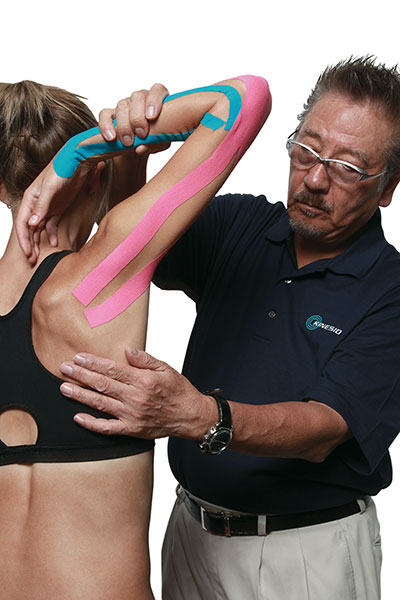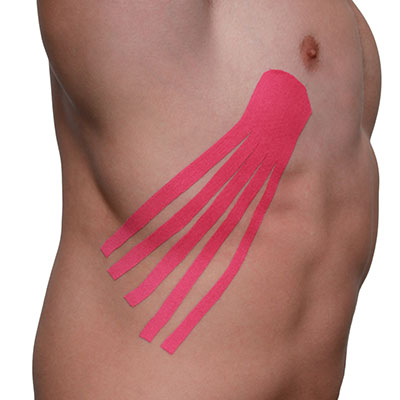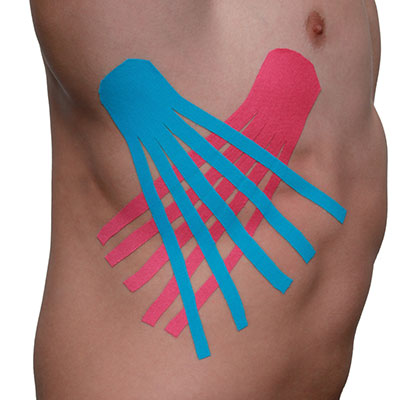
In the world of manual therapy there has long been an understanding of the close relationship between the body’s surface and its internal functions.
In the world of manual therapy there has long been an understanding of the close relationship between the body’s surface and its internal functions. I based my original work in Kinesio Taping on the concepts of space, movement and cooling. I believe these three elements would help us find the key to utilizing the powers of self-healing and regeneration, not only in the muscles and joints but also in the body as a whole.
 |
|
| Dr. Kenzo Kase developed the Kinesio Taping method. Advertisement
|
The scientific world has made progress in its understanding of these processes – although we still have a lot to learn. For instance, in the field of plastic surgery it is increasingly recognized that stem cells offer enormous potential for enhancing tissue repair and regeneration following injury. These healing processes are not limited to surgical recovery, however. Just recently, researchers in Denmark were able to track the roles of different stem cells in the skin. They found that “upon wounding, stem cell progeny from multiple compartments acquire lineage plasticity and make permanent contributions to regenerating tissue,” according to the article, The Epidermis Comprises Autonomous Compartments Maintained by Distinct Stem Cell Populations, published in the research journal Cell Stem Cell.
The researchers noted, “Until now, the belief was that the skin’s stem cells were organized in a strict hierarchy with a primitive stem cell type at the top of the hierarchy, and that this cell gave rise to all other cell types of the skin. However, our results show that there are differentiated levels of stem cells and that it is their close micro-environment that determines whether they make hair follicles, fat- or sweat glands.”
 |
|
 |
|
| Kinesio Tape application for intercostal neuralgia |
We may at times think of the five functions of the cutaneous neural interface separately, but it is important to consider that they function complementarily. As an organ of the neural system, this makes the skin’s role crucial. More than a barrier against outside forces, skin provides a generous nervous component, able to facilitate communication between the external environment and the body’s complex internal biological machinery. Medical actions for diagnosis and treatment are done through the skin in order to utilize the real anatomical continuity with the mucosa of the internal systems.
Touching the skin in any way at all will provoke a neurological reaction. We know this from even the gentle stroking and patting that a mother might use to soothe a hurt child. The trained and targeted treatment that comes with manual therapy includes this neurological effect as well as the specific physiological therapy applied in each case. Kinesio Taping is designed to provide an extension of that therapy.
Years ago, I saw the benefit of being able to provide this extended care. Therapeutic taping seems to have caught on well in pain relief and in the treatment of muscles and joints. It is also showing increasing success in other complaints. Even in the sports world, more and more therapists are relying on therapeutic taping for edema, employing the space function of the three basic concepts I have espoused: space, movement and cooling.
In addition to the downward pressure of the touch, the tape itself may be used to lift the skin’s layers microscopically, improving interstitial space for fluid movement. Our research has shown this treatment method also provides a cooling effect.
As our understanding of the skin’s role grows and develops, we are able to better understand and adopt further treatment options. Here are some examples of taping applications that demonstrate different aspects of care.
Opening the diaphragm
May be used to aid in breathing and swallowing
- Tape around the lower crest of the ribs. While in a supine position, have the patient inhale and exhale as you go along in order to identify the landmarks to position the tape properly.
- Tear the end of the tape to expose the anchor. Start at the side of the body just below the ribs. Using paper off tension, tape upwards along the contour of the ribcage with each inhalation.
- End at either side of the ribs in a symmetrical fashion. Lay down the ends with no tension.
- Rub very well to activate.
Intercostal neuralgia or pain from excessive coughing
May be used to reduce edema and pain along the neural pathway
- This application requires two fan cut strips of tape, cut into five or more tails.
- On the injured side, have the patient raise that arm up and away from the area of pain.
- Use a lymphatic Kinesio Tape fan cut. Anchor the uncut end above and forward from the pain.
- Angle the fan tails at 45 degrees going down and back across the area of injury, using paper off to 20 per cent tension in the tails.
- Pat smoothly to activate the adhesive.
- With the arm in the same position, anchor a second fan cut strip at 45 per cent from above and behind the area of pain. Angle the tails in a crisscross pattern over the first set of tape tails.
- Rub or pat gently to activate the adhesive.
Constipation
May be used to aid digestion and facilitate movement
- This application requires two X-strips and an optional I-strip.
- Start by measuring the distance from the ribcage diagonally to the opposite hipbone. Use this measurement to cut two X-strips.
- Cut the tails of the X a third of the way into each end of the tape, leaving a third uncut in the center. Round the edges.
- Fold down the center of the tape and tear away the paper backing to expose the adhesive. Use this center section to anchor over the belly button with no tension. The tape is placed diagonally.
- Use paper off tension to lay down the topmost tails towards the ribcage leaving no tension on the very ends. Do the same at the other end of the X towards the opposite hipbone. Rub the tape to activate.
- Repeat in the opposite direction with the second X-strip, crossing over the first strip at the belly button.
- For additional assistance, you may add an optional I-strip below the two X-strips.
- Tear back the paper in the center. Lay down the middle on the lower abdomen below the X-strips.
- Curve the ends up toward the hipbones with no tension. Rub the surface of the tape to activate the adhesive.
 |
|
Dr. Kenzo Kase is a U.S.-trained chiropractor, best known as the inventor of Kinesio Tex Tape and the Kinesio Taping Method. He practiced for several years in the U.S. and now splits his time between the U.S. and Japan. He continues to be active in research and patient care using Kinesio Taping and other therapies. You can reach him at info@kinesiotaping.com.
Print this page